More closely related to the tiger than the leopard, the snow leopard is a big cat that can travel over 25 miles in a single night.
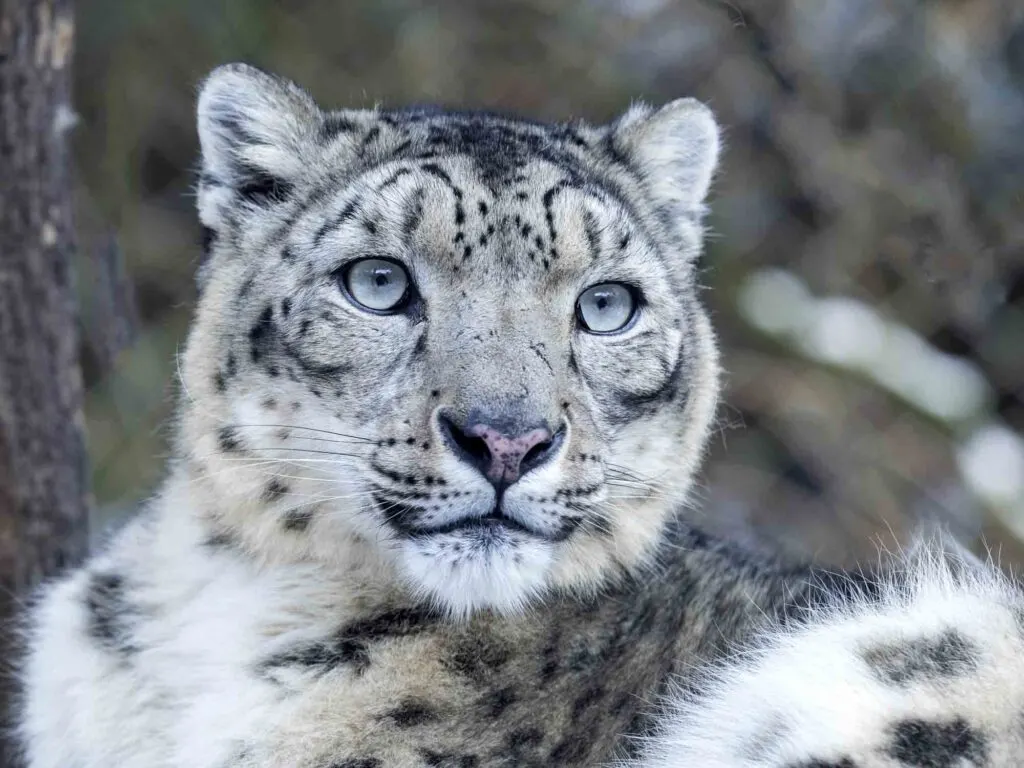
Snow Leopard
Panthera uncia
Snow Leopard Scientific Classification
- Kingdom: Animalia
- Phylum: Chordata
- Class: Mammalia
- Order: Carnivora
- Family: Felidae
- Genus: Panthera
- Species: Panthera uncia or Uncia uncia
Snow Leopard Appearance
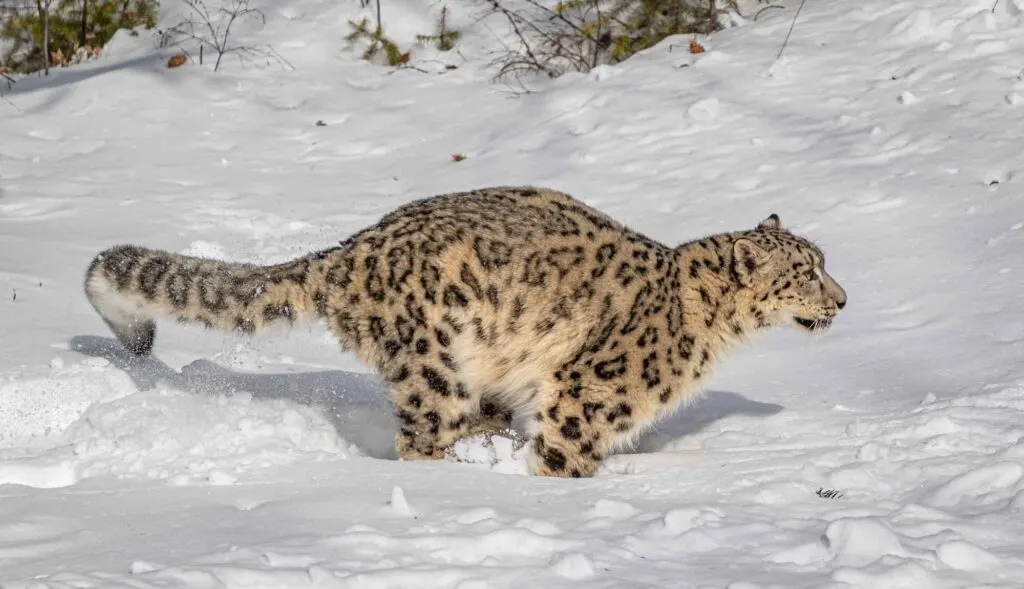
- Lifespan: 10-12 years
- Length: Head and body, 30-59 inches; tail, 31-41 inches.
- Height: up to shoulders, 22 inches
- Weight: 49-121 pounds
- Top speed: 40 mph
The snow leopard has a stocky build, short limbs, and is slightly smaller than other big cats. On average, they reach a height of 22 inches, length of 30 to 59 inches, and weight of 49 to 121 pounds.
Snow leopards show several adaptations to survive their cold, mountainous habitat. These include their thick fur coat, small rounded ears to conserve body heat, large nasal openings, small wide paws, and a long flexible tail.
Snow leopards have a white furry coat covered with yellowish to brownish tinges. The head and neck are dotted with rings of brown or black rosettes and more prominent spots on the back, flanks, and bushy tail.
The markings help the snow leopard blend into its surroundings. The woolly fur coat is thick with long hairs to protect from extreme cold.
The belly is white, the tail and undersides of their paws are covered with heavy fur, and the eyes are pale green or grey. The small rounded head has a short muzzle, domed forehead, small ears, and a distinctive set of heavy brows.
Did you know? Snow leopards’ wide, fur-covered feet act as natural snowshoes – helping distribute their weight over soft snow and protecting them from the cold.
Snow Leopard Range & Habitat
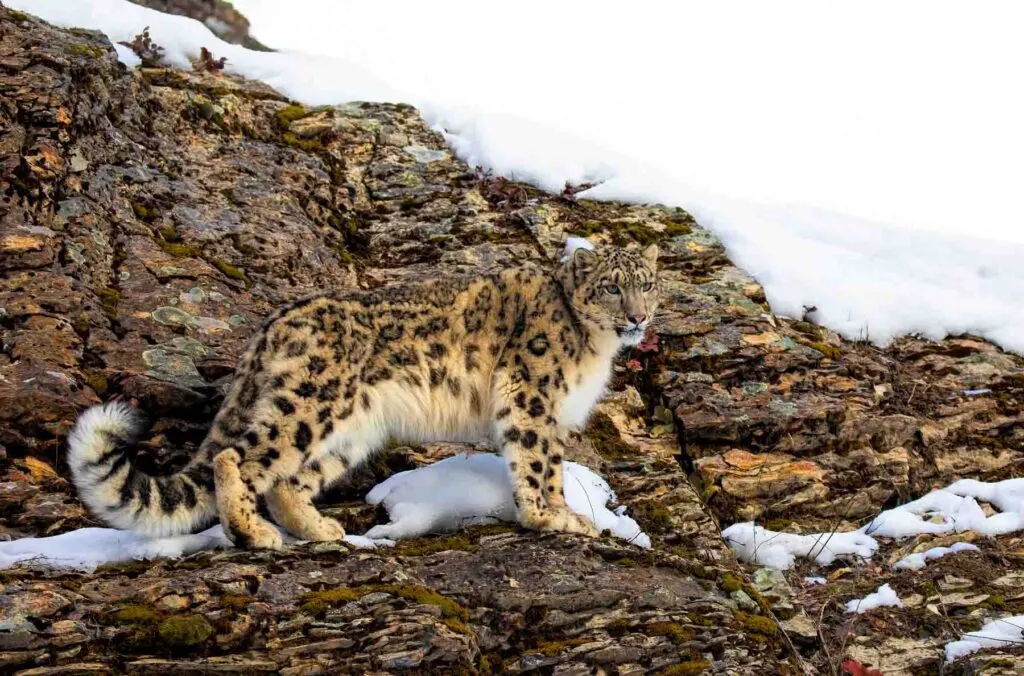
Snow leopards are native to the Central Asian mountain ranges of Siberia, Nepal, China, and Bhutan.
They are scattered through southern Siberia, in the Kunlun Mountains, Altai Mountains, Sayan, and Tannu-Ola Mountains, in the Tian Shan, through Tajikistan, Kyrgyzstan, Uzbekistan, and Kazakhstan to eastern Afghanistan, northern Pakistan, in the Pamir Mountains, the Tibetan Plateau and in the high elevations of the Himalayas in India, Nepal, and Bhutan.
Single males are known for occupying a larger area than females in snow leopard range countries.
Beyond that, the snow leopard habitat includes forest, shrubland, grassland, and rocky terrains like high valley ridges, mountain passes, and rocky outcrops.
They stick to altitudes between 9,843 and 14,764 feet above sea level and come down to elevations of 2,953 feet in winters. They avoid pastures, fields, and dense forests.
Distribution
- Continents: Asia
- Countries: Afghanistan; Bhutan; China; India; Kazakhstan; Kyrgyzstan; Mongolia; Nepal; Pakistan; Russian Federation; Tajikistan; Uzbekistan
Habitats
Forest | Shrubland | Grassland | Rocky Areas
Snow Leopard Behavior and Lifestyle
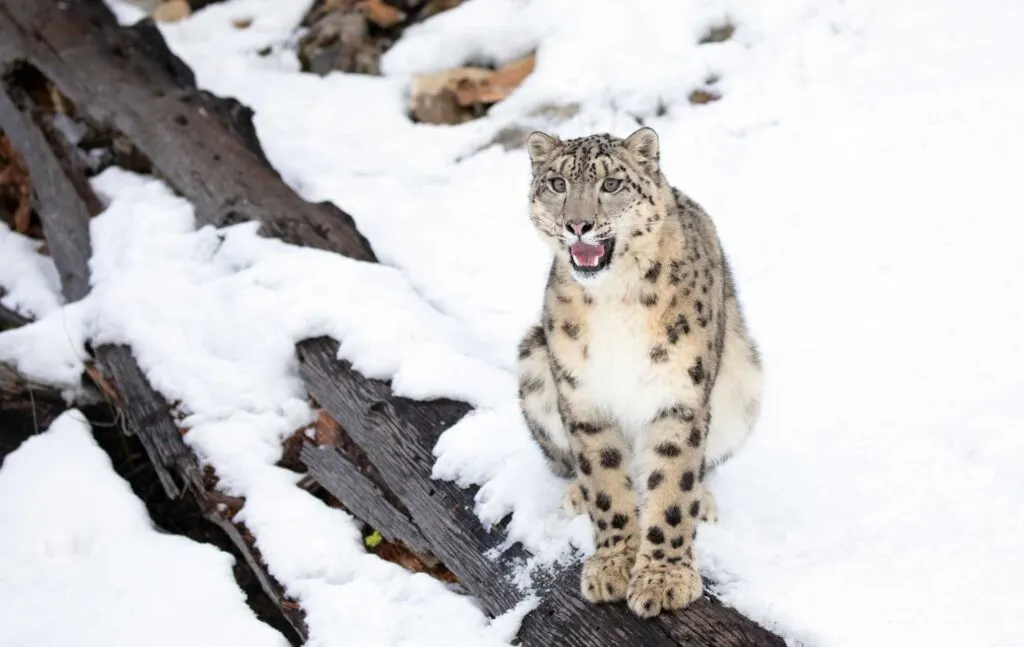
Snow leopards are most active at dawn or after dusk. They like to move around every day, from place to place, changing their resting spots several times. They tend to stick to one site, inside their home range, only for a few weeks.
These leopards are solitary creatures, avoiding each other by marking their territory and travel routes with feces, scrapes, and pungent scent sprays.
Snow leopards do not roar but produce an array of vocalizations like purrs, meows, moans, yowls, and chuffs. Similar to house cats, they use their bodies to communicate.
Snow Leopard Diet
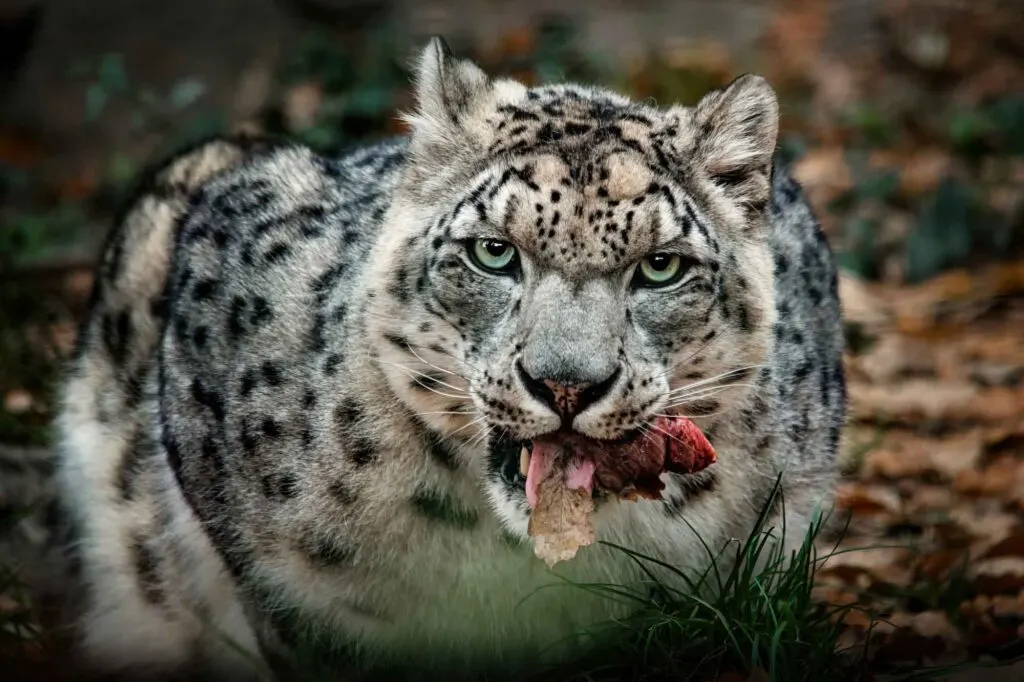
Snow leopards are meat-eaters and hunters. They strictly follow a carnivorous diet, preying on whatever animal they find.
This commonly includes ibex, markhor, deer, bharal, boar, tahrs, wild donkeys, yaks, pikas, Tibetan antelope, Tibetan gazelles, wild sheep, and blue sheep.
In the absence of a significant game, they may eat smaller prey like voles, birds, marmots, and even mice or vegetation. They may also prey on domestic livestock due to prey depletion in their habitats.
Snow leopards begin hunting by first observing their prey from a distance, usually at an elevation. Then, they will approach their target from above, using the rocky terrain for cover.
Once they are roughly 130 feet away, they will increase their pace for the next 49 feet and begin running for the last 82 feet.
Leaping from a height, they will deliver the killing blow by biting their prey’s jugular or the neck. If the game gets away, snow leopards will use the momentum from their jump and chase after the animal for about 980 feet.
Once the animal is dead, snow leopards will drag their kill to a secluded place in a safe location and eat in peace. A snow leopard can survive on a single Himalayan blue sheep for two weeks. An adult snow leopard only needs 20 to 30 adult blue sheep per year to survive.
Snow Leopard Reproduction and Mating
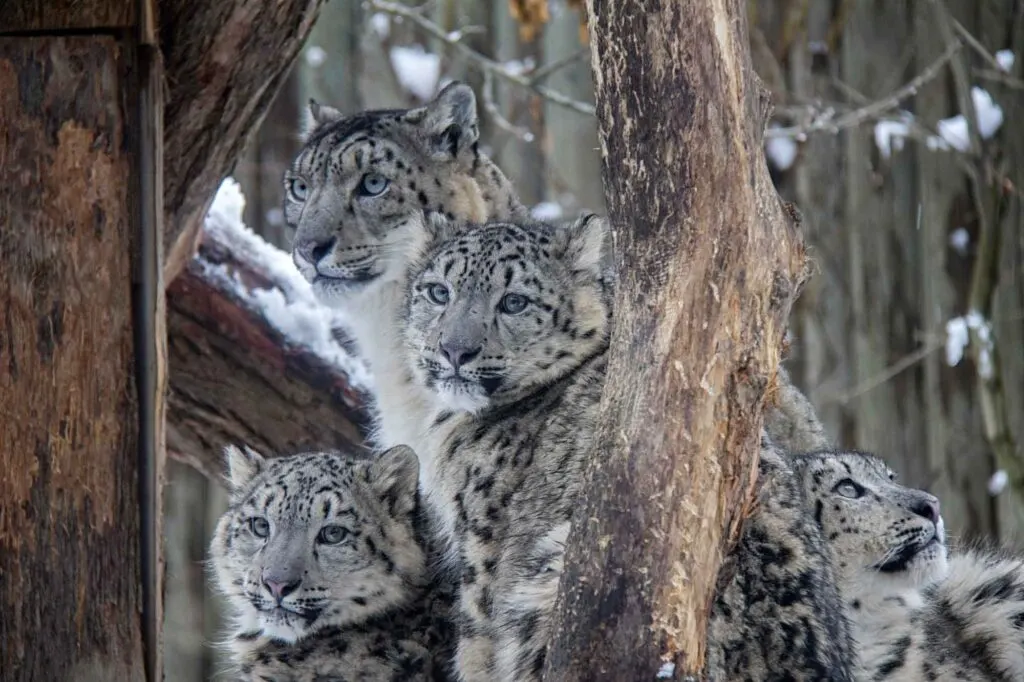
Snow leopards generally live up to 15 to 18 years in the wild and become sexually mature at two or three years. Females begin mating at two or three, while males become sexually active at about four years.
These big cats are polygynous, with males mating with several female snow leopards. Their breeding period stretches between January to March.
A female will attract a male snow leopard by raising her tail while strutting in front of him. The gestation period will last for roughly 90 to 105 days.
Two to three cubs will be born in a litter, but sometimes there can be just one or even five. The young snow leopards are birthed inside rocky shelters in the mountainous terrain with warm and comfortable nests made from mother’s fur or underbelly.
At birth, the tiny snow leopard cubs are blind and helpless. However, they are born with a thick coat of fur to protect them from the harsh climate.
They open their eyes after seven days of birth and walk at five weeks. They are fully weaned by the 10th week. The cubs will leave their mother’s den when they are around two to four months old. However, they continue to rely on their mother for the initial few years of their life.
Snow Leopard Conservation Status
Vulnerable[1]
Snow Leopard Predators and Threats
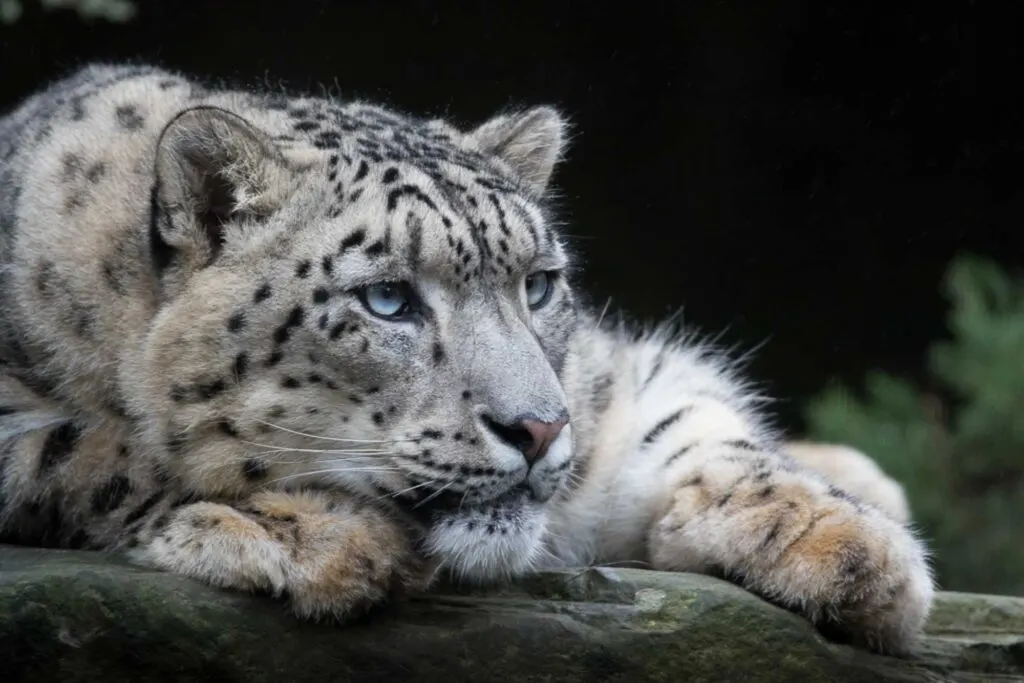
Snow leopards are listed as an endangered species on IUCN’s Red List of threatened species. The most apparent threat to snow leopard populations is humans. Humans hunt down these big cats for their furs and other body parts.
Another reason for the hunting of snow leopards is to gather their bones are used in traditional Chinese medicine.
The impacts of climate change are an increasing concern to snow leopards, causing declines in natural prey species, habitat loss, and retaliatory killings from human-wildlife conflict, which raises the need for support snow leopard conservation programs.
That’s why stopping global warming is essential to the snow leopard’s survival.
Snow Leopard Facts
A few fun facts on snow leopards are:
- Snow leopards have broad snouts. Their nose warms the cold air before it enters the lungs.
- Snow leopards can meow, growl, and puff, but they cannot roar. This is because of their short vocal folds that provide resistance to airflow.
- These big cats do not attack humans like many other felids. They can be quickly shooed away from human settlements and livestock.
- The snow leopard is the national animal of Pakistan.
- Snow leopards have short and powerful legs. They can jump as far as 50 feet.
